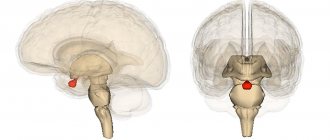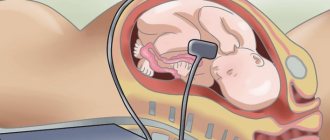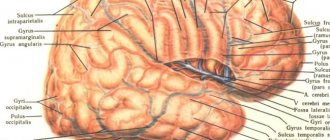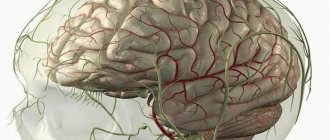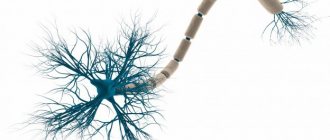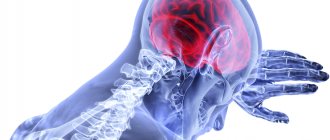Endocrine system and hormones: what is it?
The endocrine system is a whole complex of interconnected organs and endocrine glands that synthesize hormones. They, under the guidance of the nervous system, regulate the course of a huge number of biochemical transformations occurring in the body and the functioning of internal organs through the same hormones.
Hormones are biologically active substances that are synthesized by the body in small quantities and are responsible for transmitting information to other organs without changing their nature and without directly entering into various biochemical transformations.
Elements of the endocrine system are both the endocrine glands themselves (pancreas, thyroid, parathyroid glands), and individual organs, as well as parts of the brain, including the pituitary gland, hypothalamus, pineal gland, thymus, adrenal glands, gonads (testes in men and ovaries in women) . Even adipose tissue is a hormone-producing organ. In addition, endocrine cells are found in a number of other organs, including the heart, kidneys, etc.
Each of them is responsible for the production of a specific hormone, which is released into the blood and delivered directly to the target organs and tissues, starting or stopping the course of a particular process. Thanks to this, it not only ensures the fulfillment of processes important for life, but also the body’s ability to sensitively adapt to changes in the conditions of the internal and external environment, to grow and develop.
The interaction of hormones with tissues occurs mainly according to the feedback principle. That is, the hormone synthesized by the endocrine gland is delivered to target cells, triggers a certain process, which leads to the production of another hormone by another gland, which affects the source of production of the first, letting us know that the desired process has been completed and thereby inhibiting its synthesis. Thus, all hormones and, accordingly, endocrine organs are closely interconnected and are sensitive to changes in each other’s work. Therefore, when disturbances occur in one of the organs of the endocrine system, the entire body inevitably suffers.
Thus, the balance of hormones is very important for the body, but it can be disrupted due to the action of various factors, including:
- stressful situations;
- chronic lack of sleep;
- weakened immunity;
- smoking and alcohol abuse;
- irrational use of medicines;
- infection with helminths and other parasites;
- some diseases.
Unfortunately, every person can encounter such factors, since it is almost impossible to avoid them in modern life. Therefore, hormonal imbalances are extremely common today, which leads to unfavorable chain changes in the functioning of the body, disruption of many metabolic processes and the development of a wide variety of diseases, the complications of which can even lead to fatal consequences. Therefore, any changes in hormonal levels require medication correction.
However, the male body is more stable in terms of maintaining normal hormonal levels. In women, it can fluctuate due to physiological changes, in particular during pregnancy, during breastfeeding and during menopause. In addition, female hormonal levels regularly change during each menstrual cycle, which explains the fact that it is necessary to take tests for female sex hormones strictly on certain days of the cycle. Otherwise, the data obtained may not be informative.
In order to avoid the development of various diseases caused by changes in hormonal levels, it is important to correct them in a timely manner, including during physiological changes caused by menopause, since estrogen deficiency increases the risk of developing not only diseases of the genital organs, but also oncology.
Today, more than 60 different hormones are known, including sex hormones. Female sex hormones are called estrogens, male hormones are called androgens. However, this gradation is rather arbitrary, since both estrogens and androgens are synthesized in the female body, just like in the male body. Moreover, androgens act as the basis for the synthesis of estrogens in women and play an important role in maintaining homeostasis. Let's take a closer look at the organs of the endocrine system and their main hormones.
Melatonin – the “sleep hormone” and more
V.D. Zabelina, PhD, endocrinologist Consilium provisorum, 2006, No. 3. – P. 9-12
The hormone melatonin was first isolated from the material of bovine pineal (pineal) glands in 1958 at Yale University by the group of American dermatologist A. Lerner. The pineal gland is a neuroendocrine organ and is found in all vertebrates, but its role has changed during evolution. In fish and amphibians, the pineal gland also directly possesses photoreception (“third eye”); in reptiles and birds, the pineal gland also has a secretory function; in mammals it is already an exclusively secretory organ. But in all animal species, the main function of the pineal gland is to transmit information about the light regime in the environment to the internal environment of the body and thus maintain the physiological rhythmic fluctuations of its homeostasis. This is mediated mainly by the secretion of the main hormone melatonin, and if in some birds and lower vertebrates the pineal gland is a generator of biological rhythms, then in mammals it is directly involved in the coordination of the physiological rhythms of the body.
The main and most studied hormone of the pineal gland is melatonin, but the pineal gland can also secrete some other serotonin derivatives and peptide hormones. It was found that melatonin is an indole derivative of serotonin and is produced at night with the participation of the enzymes N-acetyltransferase and hydroxyindole-O-methyltransferase. An adult synthesizes about 30 mcg of melatonin per day; its concentration in the blood serum at night is 30 times higher than during the day, with peak activity occurring at 2 am. Melatonin is transported by serum albumin, after being released from albumin, it binds to specific receptors on the membrane of target cells, penetrates the nucleus and carries out its action there. Melatonin is rapidly hydrolyzed in the liver and excreted in the urine; the main metabolite is 6-hydroxymelatonin sulfate (6-COMT), the content of which allows us to indirectly judge the production of melatonin by the pineal gland.
Features of melatonin secretion
Many substrates and metabolic pathways for melatonin synthesis have a distinct circadian rhythm. Thus, the level of serotonin, the precursor of melatonin, rises during the day and decreases significantly in the dark phase of the day, the activity of N-acetyltransferase and the concentration of melatonin are maximum at night and are caused by the release of norepinephrine from sympathetic neurons localized in the pineal gland. Almost immediately after synthesis, melatonin is secreted by pineal cells into the systemic circulation. The circadian rhythm of melatonin synthesis appears immediately after the birth of the fetus and is established in full-term infants by 9–12 weeks of life, and 2–3 weeks later in premature infants. Low nighttime melatonin concentrations increase by 2–3 years of age, then decrease significantly by 15–20 years of age and are established at adult levels. Data on seasonal variations in melatonin synthesis in the human body are statistically unreliable and contradictory.
Light is a very powerful factor influencing hormone synthesis, and even very short exposure to bright light at night quickly and significantly suppresses the formation of melatonin. It is interesting that there are species differences in the suppression of melatonin synthesis by light: hamsters are more affected by blue light, rats by white light, and for them a very low power of the light flux is sufficient, and for ground squirrels - thousands of times more. Red light suppresses melatonin synthesis differently depending on the time of day: at 16.00 more strongly than at 24.00.
No significant sex differences in melatonin synthesis were noted. During the aging process, the circadian rhythm of melatonin secretion is maintained, but its average daily concentrations in older people are 50% less than in young people. However, 33% of 70–90 year olds have normal daily melatonin levels. It should be noted that the decrease in melatonin levels during aging is not “catastrophic.”
Exercise changes melatonin levels: in women, exercise during the day increases daily melatonin levels in the blood, but with increasing intensity of exercise they return to normal. Exercising in the late evening (when melatonin secretion is already physiologically increased) slowed the increase in its concentration compared to exercise in the afternoon and morning. High-intensity exercise at night (with existing high levels of melatonin) led to an increase in its secretion by 50%, while the next day the increase in melatonin secretion at night was delayed by 2-3 hours. Data on the effect of sleep duration on melatonin levels are inconsistent, but body position is reflected in night hormone levels: increases when lying on your back and decreases when changing position.
Nighttime peaks of the hormone are significantly reduced after long-term exposure to low-frequency magnetic fields. The secretion of melatonin is reduced by exposure to a polarized electromagnetic field (in electricians exposed to a field of 60 Hz, the release of melatonin metabolites is reduced).
Biological effects of melatonin
Melatonin is a key coordinator of biological rhythms, but this is not its only function. Three types of melatonin receptors have been identified - M-1a, M-1b and M-1c, but only the first two are found in humans. M-1b receptors are found in the retina and various parts of the brain, and it is believed that it is through them that circadian rhythms are established. M-1a receptors are found in the hypothalamus, kidneys, intestines and melanoma cells.
Melatonin has an antigonadotropic effect and is considered as a hormonal mediator that modulates the activity of the reproductive system depending on the photoperiodic environment. In animals, delayed sexual development in females and decreased testosterone secretion in males have been described under the influence of high concentrations of melatonin.
In addition to hormonal effects, melatonin, like other biogenic amines, has neurotransmitter functions, i.e. provides excitability of postsynaptic membranes and participates in the conduction of nerve impulses. This action is extremely important for providing visceral effects and integrative functions such as behavior, memory and learning.
Melatonin is the strongest known endogenous free radical scavenger and the strongest antioxidant. In recent years, evidence has emerged that melatonin can be localized not only in plasma, but also in cell nuclei, and protect nuclear macromolecules from oxidative damage in all subcellular structures.
In the early stages of embryonic development, biogenic amines, including melatonin, play the role of specialized cell signaling molecules that regulate the processes of cellular renewal. It has been established that melatonin can suppress cell proliferation, and the strength of its effect is not inferior to the powerful cytotoxic agent colchicine. These results correlate with experimental data on the antitumor effects of melatonin and pineal gland extracts.
Melatonin is a hormone produced not only in the pineal gland
The amount of hormone produced in the pineal gland would be clearly insufficient to provide such significant biological effects of melatonin. Studies have shown that after removal of the pineal gland in experimental animals, significant amounts of melatonin are found in the blood. After obtaining specific antibodies to indolealkylamines, it became possible to find extrapineal sources of melatonin synthesis. They turned out to be enterochromaffin cells of the gastrointestinal tract (EC cells), the main storage cells of serotonin (containing up to 95% of all endogenous serotonin) - the precursor of melatonin. The number of these cells in the gastrointestinal tract is much greater than pinealocytes. Further it turned out that melatonin is synthesized not only in them! The synthesis of this hormone has also been detected in a large number of neuroendocrine cells of the airways, lungs, under the hepatic capsule, in the cortical layer of the kidneys and along the border between the cortical and medulla layers of the adrenal glands, in the paraganglia, gallbladder, ovaries, endometrium, prostate gland, placenta and inner ear . In recent years, the synthesis of melatonin has also been discovered in non-endocrine cells: in the thymus, pancreas, cerebellum, retina, in blood cells - mast cells, lymphocytes - natural killer cells, platelets, eosinophilic leukocytes, as well as in some endothelial cells. Functionally, all cells that produce melatonin belong to the so-called diffuse neuroendocrine system, a universal system of adaptation and maintenance of homeostasis in the body.
Within this system, two links of melatonin-producing cells are distinguished: central (includes the pineal gland and cells of the visual system), in which the rhythm of melatonin secretion coincides with ri, and peripheral - all other cells, where the secretion of the hormone does not depend on light. It has been suggested that extrapineal melatonin may play a key role as a paracrine signaling molecule for cell interaction and local coordination of cellular functions, but its full role is still not clear, so research in this direction is very intensive.
Melatonin may influence tumor growth
In a number of studies on laboratory animals and in tumor tissue culture systems, it was found that melatonin has an antitumor, oncostatic effect. This has greatly fueled interest in this hormone, and the study of its effects is very active. It is difficult to draw a definitive conclusion about the unitary mechanism of action of melatonin on tumor growth due to its diverse physiological effects. This includes its effects on the synthesis and secretion of pituitary and sex hormones, modulation of the immune response to the presence of tumor cells and direct cytotoxic effects on them as a powerful endogenous antioxidant. There are suggestions that melatonin may enhance the expression of adhesion molecules and thereby prevent tumor growth, since it is known that most malignant tumors have disturbances in cell adhesion and functional intercellular connections. Domestic researchers (T.V. Kvetnaya, I.M. Kvetnoy et al.) have shown that in patients with colon, stomach and lung cancer, the excretion of 6-COMT, a melatonin metabolite, significantly positively correlates with a reliable marker of the proliferative activity of tumor cells - nuclear proliferating cell antigen (PCNA). This indicator reflects the fraction of proliferating cells and gives an idea of the possible progression of the tumor. It has been suggested that determination of 6-COMT excretion may be useful in the dynamic monitoring of patients with cancer of these locations.
The oncostatic effect of melatonin in vitro was demonstrated most clearly in experiments on MCF-7 breast cancer cell cultures. There was a decrease in the proliferative capacity of cells and metastasis, and an increase in the number of cells that die in the form of apoptosis. It is believed that the nuclear receptors of these cells can serve as a target for the implementation of the antitumor effects of melatonin. There is a connection between the presence of estrogen receptors on cancer cells and the action of melatonin: its effect is greater in the presence of receptors, perhaps melatonin acts as a natural anti-estrogen. In experiments on rodents, it was found that exposure to constant lighting increased the incidence of breast and uterine cancer, and the administration of melatonin at a dose of 50–100 mg/day had a protective effect on the development of tumors, mastopathy, and ovarian follicular cysts. Epidemiological data indicate that women night shift workers, aviation employees (stewardesses, air traffic controllers), radio and telegraph operators have an increased risk of developing breast cancer, while women who are primarily blind (i.e., those with light deprivation) have an increased risk of developing breast cancer. 2 times less.
In vitro, the suppressive effect of melatonin on the growth of melanoma cells was shown, although the effect of the hormone depended on the intensity of tumor proliferation: growth was inhibited at moderate, but not at high cell proliferative activity. The effects of melatonin were dose-dependent, but the mechanism of oncostatic action is currently not entirely clear. Melatonin also suppressed the growth of uveal melanoma cells, characterized by a high degree of metastasis, which allows us to consider it a promising drug in the treatment of uveal melanoma.
Experiments have shown the inhibitory effect of melatonin on the growth of cell cultures of ovarian carcinomas, neuroblastomas, laryngeal tumors, bladder cancer and some others. However, a large number of unclear questions remain regarding the mechanisms of melatonin action and delayed effects, and research in these areas is actively continuing.
The effect of melatonin on sleep
As already mentioned, the role of the pineal gland and epiphyseal melatonin in the daily and seasonal rhythm, sleep-wakefulness regime seems undeniable today. In diurnal (daytime) animals (including humans), the secretion of melatonin by the pineal gland coincides with the usual hours of sleep. A number of studies have shown that an increase in melatonin levels is not an imperative, obligatory signal for the onset of sleep. In most subjects, taking physiological doses of melatonin caused only a mild sedative effect and reduced reactivity to common environmental stimuli. Unlike powerful “nighttime” sedative-hypnotics of the benzodiazepine series, melatonin does not cause feelings of unbearable fatigue and an irresistible craving for sleep. With sufficient motivation, a person will be able to overcome the somnogenic effect of melatonin.
Taking “physiological” doses of melatonin (0.1–0.3 mg) in the morning, afternoon and evening leads to an increase in its plasma concentration to 50–120 mg/ml, which corresponds to the night level of the hormone in healthy adults. After oral administration of 2–3 mg of melatonin, its plasma level remained above normal for 3–7 hours, with peak concentrations reached after 60 minutes. In an experiment, daytime infusions of melatonin in healthy people resulted in increased sleepiness. Evening administration of small doses of melatonin caused a decrease in latency and an extension of the nocturnal rest period, while suppression of melatonin production led to the destruction of sleep architecture. The results of taking both higher (up to 80 mg) and lower (1-6 mg) doses of melatonin are extremely contradictory, so new research is being undertaken into the effect of melatonin on the structure and quality of sleep.
It is hypothesized that the role of melatonin is to open the so-called sleep gates, to inhibit wakefulness, and not to directly influence somnogenic structures of the brain. According to physiologists-hypnologists, the opening of the “sleep gate” is preceded by a period of increased human activation - a “forbidden period” (“forbidden zone”) for sleep, which quite abruptly gives way to the “opening of the gate.” There is some evidence that the "forbidden time zone" represents the peak of the daily wakefulness cycle. The beginning of the nightly increase in melatonin secretion usually occurs in the middle of the “forbidden period.” Upon reaching its concentration in the blood, corresponding to approximately half of the maximum “nighttime” level, a sharp rise in “sleep pressure” occurs, facilitating the transition from wakefulness to sleep.
Desynchronization between the secretion of melatonin by the pineal gland and the period of sleep in humans can occur in cases of complete blindness, destruction of the pineal gland (surgical removal, tumor, hemorrhage into the pineal gland), during transmeridian flights or shift work. At the same time, timely administration of melatonin can contribute to the rapid “translation” of the body’s biological clock to a new rhythm.
Regarding transmeridian flights, the recommendations are as follows: 1) when flying over a distance of less than 3 time zones, the use of melatonin is useless; 2) when flying 3–6 time zones in an eastern direction - take 0.2 mg of melatonin when going to bed at local time to shift the phase of the daily ri; 3) when flying 3-6 time zones in a western direction - take 0.1 mg of melatonin immediately after midnight local time, if the person is not sleeping at this time, or when spontaneously awakening in the early morning hours; 4) when flying 7–12 time zones in any direction, melatonin is contraindicated, since this can worsen a person’s subjective state.
The use of melatonin for the correction of biorhythms during shift work is very individual, and the decision depends on the nature of this work, lighting and personality characteristics of the person. Ideally, individual changes in melatonin concentrations before and after administration should be taken into account, which can be clarified by examining urine and saliva.
At the Somnology Center of the Ministry of Health of the Russian Federation in 1998–1999. A.M. Vein, Ya.I. Levin et al. A study was conducted of the hypnotic effects of melatonin on the quality of night sleep in patients with insomnia (3 mg every evening 30 minutes before bedtime). In a group of 40 people, a significant improvement in overall sleep was determined, including the most significant improvement in falling asleep. Interestingly, the worse the baseline subjective sleep measures, the greater the positive effect of melatonin.
The same authors showed the positive effect of lower doses of melatonin (1.5 mg per dose) on the quality of night sleep in patients with fibromyalgia, while the quality of fine motor skills of the hands, general well-being and mood of these patients improved during the day. In patients who had suffered a stroke, after taking melatonin at a dose of 3 mg, the time to fall asleep decreased, and with sleep inversion, biori restoration was noted. An important effect was a decrease in the level of depression, although personal and reactive anxiety remained unchanged.
Melatonin should be taken against a background of very low light (no more than 50 lux), since bright light is incompatible with its entry into the body. High concentrations of melatonin increase the photosensitivity of retinal receptors and can provoke their damage by bright light.
Melatonin is completely non-toxic, at least for short-term use. But the absence of acute toxicity of even pharmacological doses of the drug (milligrams and even grams of melatonin) does not guarantee against the side effects of long-term use of melatonin in large doses. In addition to jet lag, after taking melatonin at the “wrong time,” excess melatonin can theoretically lead to serious endocrine disruption (primary hypogonadism in men and amenorrhea in women). Children are generally very sensitive to melatonin, so its use in them requires great caution. Do not forget about possible interactions of melatonin with other medications. A special role can be played by psychotropic drugs that affect serotonergic and noradrenergic transmission in the nervous system, since the secretion of melatonin in the dark depends on sympathetic (noradrenergic) transmission, and serotonin is its direct biochemical precursor.
Considering that the hypnotic effect of “physiological” doses of melatonin (0.1–0.5 mg per dose) is quite pronounced, it is advisable to strive to use such low doses of the drug.
Pineal gland and melatonin are links in the body’s defense system against stress
After experiments and direct clinical observations, the concept was formulated that the pineal gland and its main hormone melatonin are part of the body’s defense system against all sorts of adverse effects. The pineal gland and melatonin play a nonspecific role, but pineal gland support is provided at all levels of stress management. A two-phase reaction is noted in the case of a prolonged stressful situation: an initial decline in epiphyseal activity in the resistant phase of stress with a further sharp rise. In experiments on rats, it was shown that melatonin is able to change the negative emotional state, dampen anxiety, which is provoked by various stressors, and therefore modify the pathophysiological changes that occur subsequently. This was confirmed in healthy volunteers: taking low doses of melatonin reduced anxiety, normalized nighttime sleep with deepening and a decrease in the number of night awakenings.
According to numerous observations, the hormone stabilizes the activity of various edocrine systems disorganized by stress, including eliminating excess stress adrenal hypercortisolism. An important consequence of prolonged stress is stress-induced immunodeficiency, and melatonin helps normalize immunological parameters. It is suggested that the pineal gland plays a certain role in counteracting chemical aggression and combating various xenobiotics (including pharmacological drugs). It has been found that pineal hyperactivity or melatonin administration provokes tolerance to many substances, primarily psychotropic drugs. Let us remember that one of the most severe tortures for a person is the bright constant light in a forced-stay room. It is possible that prolonged exposure to intense light, especially at night, may have a pathogenic effect on the body precisely due to the suppression of the biological rhythm of melatonin synthesis. Physiologists are studying the mechanisms of action of melatonin during periods of stress, and gradually many questions are becoming clearer. However, these problems are so complex that they require further research and experimentation.
The role of melatonin in the development of diseases of the cardiovascular system, gastrointestinal tract, the influence of the pineal gland and melatonin on the seasonality of exacerbations of diseases, changes in the reproductive system of women also attract much attention from scientists, but today there remains a lot of uncertainty and controversy, which dictates the need for further research.
Melatonin and other epiphyseal hormones can be classified as geroprotective. A parallelism has been established between the degree of age-related involution of the pineal gland and tissue deterioration. It is known that with aging, the degree of immunological protection decreases, and melatonin, as has been repeatedly indicated, has immunomodulatory activity.
The antioxidant, antitumor, immunomodulatory, anti-anxiety, antidepressant and hypnogenic activity of melatonin, and the non-toxicity of the drug make it very attractive for use in the practice of treating a wide range of human diseases, especially in old age. There is no doubt that research into melatonin and its physiological and pharmacological effects will continue, because this may provide new therapeutic options.
Pituitary gland and hypothalamus
The hypothalamus is a kind of connecting link between the endocrine and nervous systems, since it simultaneously belongs to both. It is he who controls and combines endocrine regulatory mechanisms with nervous ones. In it, in response to signals received from the central and autonomic nervous system, so-called neurohormones are synthesized, which are responsible for regulating the production of their own hormones by other endocrine glands. It also controls the work of the pituitary gland, which is the central organ of the endocrine system and has the greatest influence on the activity of its other components.
It is the hypothalamus that is able to give the pituitary gland the command to increase or slow down the production of all other hormones in the body.
Adrenocorticotropic hormone
Adrenocorticotropic hormone (ACTH) is a peptide hormone that is synthesized by the anterior pituitary gland under the influence of neurohormones produced by the hypothalamus. It is responsible for initiating the synthesis of cortisol in the adrenal glands, as well as androgens, i.e. male sex hormones. In this case, adrenocorticotropic hormone, which is also called corticotropin, helps to increase the sensitivity of peripheral tissues to the action of corticosteroids. To a lesser extent, it is responsible for the occurrence of biochemical processes responsible for the formation of bone tissue in osteoblasts.
ACTH levels can fluctuate under the influence of stress, physical activity, and also change during sleep, pregnancy and depend on the phase of the menstrual cycle.
The normal level of ACTH in the blood ranges from 0 to 46 pcs/ml. The physiological peak of its production occurs at 6-8 hours, and the minimum at 18-23 hours. Its concentration may increase when:
- primary adrenal insufficiency;
- Nelson's syndrome;
- congenital adrenal hyperplasia;
- paraneoplastic syndrome;
- syndrome of ectopic ACTH production, etc.
The reason for the increase in ACTH levels in the blood may be taking medications containing calcium gluconate, insulin, vasopressin, estrogens, corticosteroids, spironolactone, lithium, methopriron, ethyl alcohol.
If increased ACTH production persists for a long time, an increase in the size of the adrenal glands may be observed, as well as the accumulation of cholesterol, ascorbic and pantothenic acid in their cortex, which will lead to its proliferation.
A decrease in ACTH levels may be due to:
- secondary adrenal insufficiency;
- adrenal cortex cancer;
- administration of corticosteroids;
- the presence of a tumor that produces cortisol.
Vasopressin (antidiuretic hormone)
Vasopressin is a peptide hormone that is synthesized by the posterior lobe of the pituitary gland. Its main task is to narrow blood vessels, which is one of the mechanisms for regulating blood pressure levels, namely, contributing to its increase. Vasopressin is also responsible for the reabsorption of water in the kidneys, which leads to a decrease in the volume of urine excreted and the maintenance of normal water-salt metabolism. Thanks to this property, vasopressin has earned its second name - antidiuretic hormone.
With a deficiency of vasopressin, diabetes insipidus may develop.
A growth hormone
Somatotropin or growth hormone is produced by the pituitary gland and is the main regulator of the process of human growth and development. Maintaining its production at the proper level is most important for children from birth to puberty, since bone growth largely depends on it. In adults, it persists and is responsible for regulating bone density, maintaining muscle mass, and is also involved in the metabolism of fatty acids.
The highest level of somatotropin in the blood is usually observed at night. Normally, in men its concentration is 0-3 ng/ml, in women – 0-8 ng/ml.
Lack of growth hormone leads to a delay in the physical development of children, which can be caused by tumors and injuries of the pituitary gland, meningitis, or a number of congenital pathologies. In adults, growth hormone deficiency can lead to increased bone fragility, decreased muscle volume, and decreased lipid concentrations.
Excess somatotropin is observed in pituitary tumors, which are usually benign in nature. This can cause gigantism, the formation of coarse facial features, weakness, delayed sexual development, and in adults – acromegaly.
Luteinizing hormone
Luteinizing hormone (LH) is a gonadotropic hormone of the anterior pituitary gland that activates the production of sex hormones in both women and men. It stimulates the synthesis of estrogen and progesterone, and also provokes the rupture of a mature follicle in the ovary and the onset of ovulation. At the same time, LH is closely interrelated with estrogens, therefore, when their levels fluctuate, changes in LH concentration are also possible. In men, LH affects the cells of the testes, stimulating the production of testosterone in them.
An increase in the synthesis of luteinizing hormone is possible when:
- pathologies of the pituitary gland, including the formation of malignant tumors;
- polycystic ovary syndrome;
- endometriosis;
- urological pathologies;
- testicular tumors.
LH levels in women directly depend on the phase of the menstrual cycle. Normally, it increases sharply with the onset of menopause.
Symptoms of excess LH may include frequent headaches, shortness of breath, weakness, menstrual irregularities and signs of excess estrogen.
Hormone deficiency is observed when the pituitary gland is malfunctioning, severe underweight up to anorexia, and severe stress. In such situations, gastrointestinal dysfunction and weakness may occur.
Follicle stimulating hormone
Follicle-stimulating hormone or FSH is a glycoprotein hormone synthesized in the anterior pituitary gland and is directly involved in the regulation of the activity of the gonads. Its production is activated by a decrease in the concentration of sex hormones, and inhibition is activated by an increase in their level. Normally, FSH levels increase sharply before the onset of puberty with the development of secondary sexual characteristics.
With the establishment of the menstrual cycle in women, the hormone activates the process of maturation of follicles in the ovaries and prepares them for the action of LH, and also stimulates the synthesis of estrogens, i.e. interacts with them according to the feedback principle. In men, FSH influences the development of seminiferous tubules and an increase in testosterone levels, and also activates the formation and maturation of sperm in the testicles.
Excess FSH occurs with kidney pathologies, pituitary tumors, alcoholism, primary testicular failure, hypogonadism, and endometriosis. This is accompanied in women by breakthrough uterine bleeding in the absence of a direct dependence on the phase of the menstrual cycle, or by the absence of menstruation, and frequent headaches.
FSH deficiency may be present in polycystic ovary syndrome, pathologies of the hypothalamic-pituitary system, exhaustion, anorexia, and dwarfism. In such situations, the menstrual cycle is disrupted, infectious or chronic diseases of the genital organs arise, and infertility may occur.
Oxytocin
Oxytocin is a neuropeptide that accumulates in the posterior lobe of the pituitary gland and is responsible for the contraction of the muscles of the uterus and mammary ducts, which becomes especially important during childbirth and subsequent breastfeeding. In addition, oxytocin is also called the hormone of trust, since with an increase in its content in the blood, the level of empathy and affection increases.
Prolactin
Prolactin is another pituitary hormone that stimulates the normal development of the mammary glands, milk production during pregnancy, and is also responsible for maintaining lactation after childbirth. In addition, it regulates the synthesis of progesterone and inhibits the production of FSH, which ensures the maintenance of the regularity of the menstrual cycle.
High concentrations of prolactin are characteristic of:
- hypothyroidism;
- formation of tumors of the pituitary gland and hypothalamus;
- chronic renal failure;
- polycystic ovary syndrome;
- hypogonadism;
- severe stress.
This leads to the development of infertility, amenorrhea (lack of menstruation) and galactorrhea (formation of breast milk outside of pregnancy and lactation). This may be accompanied by chest discomfort and headaches.
Normally, an increased level of prolactin is observed after childbirth while breastfeeding continues, which has an anovulatory effect on the ovaries and reduces the likelihood of pregnancy.
Hormone deficiency occurs when the pituitary gland is insufficient, which is typical for:
- Sheehan's syndrome (necrosis of the pituitary gland caused by excessive blood loss during childbirth);
- injuries, surgeries, radiation therapy affecting the pituitary gland;
- taking antiepileptic drugs, some corticosteroids, dopaminergic drugs, etc.
With a decrease in prolactin concentration, increased sweating and severe thirst are observed. If a woman has Sheehan syndrome, lactation stops, followed by a gradual decrease in the size of the mammary glands, weight loss, menstrual irregularities, and decreased libido.
Thyroid-stimulating hormone
Thyroid-stimulating hormone, or TSH, is primarily responsible for producing thyroid hormones, which are responsible for maintaining normal energy levels. Therefore, when its production changes, the synthesis of thyroid hormones is immediately disrupted, which leads to the development of corresponding diseases. The causes of impaired TSH production by the pituitary gland are pathologies of the hypothalamus, as well as the thyroid gland. Therefore, increased concentrations of TSH in the blood are found when:
- hypothyroidism;
- pituitary tumors;
- preeclampsia;
- mental illness;
- adrenal insufficiency.
TSH deficiency is characteristic of diffuse toxic goiter, Plummer's disease, hyperthyroidism in pregnancy, as well as autoimmune thyroiditis and cachexia.
Hormones of the pineal gland and pineal gland.
Epiphysis The role of pineal gland hormones.
Otherwise, the pineal gland can be called the pineal gland, which is an endocrine gland of a grayish-reddish color, located in the region of the human midbrain.
Why the pineal gland? Iron received this name because of its shape (translated from Greek Epiphysis - lump, growth).
Despite its small size, the gland is a multifunctional organ of the human endocrine system.
The main function of the gland is to produce the hormone melatonin.
Melatonin, more often called the sleep hormone, in turn maintains the physiological state of the body at an optimal level.
The structure of the epiphysis:
The organ is unpaired and is located between the two hemispheres. The size of the gland is small, like a small pea with a bumpy surface.
The pineal gland can be divided into two parts: stroma and parenchyma.
The stroma is a connective tissue septum that extends deep into the organ and divides the parenchyma into lobules. The stroma is a kind of frame of the organ. The outside of the gland is covered with a connective tissue capsule.
The parenchyma is represented by lobules, which contain two types of cells: secretion-forming pinealocytes and interstitial cells. Pinealocytes predominate in the central parts of the lobules, and among them light and dark cells are distinguished. Interstitial cells, in turn, are located on the periphery of the lobules and perform a supporting function.
Functions of the pineal gland:
The endocrine gland performs the following functions in the human body:
1. Synthesis of biologically active substances - hormones.
2. Regulates the exchange of macroelements in the body: calcium, phosphorus and magnesium.
3. Maintaining water-salt balance.
4. Participates in the regulation of: blood pressure, digestive tract function, and brain cell function.
5. Responsible for the body’s adaptation to changing lighting conditions.
The pineal gland is responsible for the synthesis of four biologically active important substances:
1. Melatonin
2. Serotonin
3. Histamine (biogenic amine)
4. Norepinephrine
MELATONIN
It is a photoperiodic hormone, i.e. its synthesis directly depends on the time of day. So, this biologically active substance is produced mainly at night, due to the fact that light impulses entering through the retina during the day cause inhibition of its synthesis. Light enters the eyes and stimulates the retina -> impulses from the retina enter the nervous system -> inhibition of melatonin production. The same can be said about sound.
But what happens inside the gland during the day, when melatonin cannot be synthesized? During daylight hours, there is an active accumulation of serotonin.
Scientists have proven that it is melatonin that provokes a feeling of drowsiness in a person.
At the age of 9-13 years, the period of puberty, maximum secretion of melatonin by the pineal gland is noted. With age, its blood levels gradually decrease, leading to insomnia of unknown etiology in older people. The value of melatonin in the blood of women is directly dependent on the phase of the cycle, so the peak level occurs during menstruation, and the minimum value occurs during ovulation.
Why does our body need melatonin?
- Regulation of circadian (daily) rhythms - a kind of “biological clock” of the body. Regulates alternating cycles of sleep and wakefulness.
- Immunostimulating effect.
- By blocking the production of gonadotropic hormones synthesized by the pituitary gland, it supports the proper formation and functioning of the woman’s reproductive system, normalizes the menstrual cycle and is responsible for its duration.
- Optimizes thyroid function.
- Antioxidant function, neutralizes free radicals, thereby reducing the symptoms of diabetes, depression, and hypertension.
- Inhibits the synthesis of insulin, inflammatory mediators, and growth hormone.
- Has a calming effect and reduces anxiety.
- Inhibits the aging of the body and metabolism, increasing life expectancy.
- Clinical studies have proven that melatonin slows down the growth of tumors. Has an antitumor effect.
SEROTONIN
The hormone Serotonin or the hormone of happiness. as it is usually secretly called, it is produced in the daytime. For this reason, a good source of serotonin is walking in the fresh air. Serotonin is the basis for the production of melatonin. Therefore, its role is much more for our body than just a good mood.
Its role for our body:
1. Stimulates the production of the hormone prolactin, which is necessary for a nursing woman to maintain lactation.
2. Regulation and optimization of mood.
3. Analgesic effect in pathologies of various origins.
4. Stimulates digestion.
5. In case of allergic and inflammatory reactions, it regulates blood clotting processes.
6. Affects the maturation and release of the egg from the ovary in women.
EPIPHYSUS AND SLEEP.
The hormone melatonin produced by the pineal gland, acting on the brain, has a depressing effect on the bioelectrical activity of the brain and the neuropsychic activity of a person, thereby providing a hypnotic and calming effect. Melatonin is like a unique internal clock for us, thanks to which we want to wake up in the morning and sleep at night.
I think you have noticed more than once how in the evening you gradually begin to fall asleep. Because it is in the dark that a hormone is synthesized, which in a unique way “puts us to sleep.” People say “sleep is the best medicine,” and this is true. During sleep, our pineal gland works tirelessly, repairing all damage and strengthening the body. The maximum amount of the substance is produced around 2 am, and by 9 am its amount sharply decreases. It has been proven that when taken orally, melatonin has a hypnotic effect, without disturbing the sleep phase.
The drug Endoluten contains pineal peptides, which activate the synthesis of pineal gland cells, thereby renewing and rejuvenating the pineal gland, which has a beneficial effect on its functions and the production of hormones so necessary for our body.
IMPORTANT!!! Endoluten is not a hormonal drug; this drug contains peptides, bioregulators of the pineal gland, in which the secretion of the hormones serotonin and melatonin occurs.
EPIPHYSUS AND CLIMAX IN WOMEN
Zhenoluten - ovarian peptides
Based on research by foreign scientists, during menopause, about 50% of women report problems falling asleep. This is due to the fact that during this period, involutive processes predominate in the woman’s body: the reproductive, and subsequently the hormonal functions of the ovaries decrease.
With aging, significant changes and transformations occur within the body in organs and tissues, and they do not bypass the pineal gland. With age, the organ gradually loses its function and thereby produces less melatonin.
Studies have confirmed that with the onset of menopause, the secretion of melatonin changes and, as a result, not only problems with falling asleep can be observed, but also the formation of various other diseases. To help the female body during menopause and alleviate the symptoms of menopause, the Institute of Gerontology and Bioregulation developed peptides, ovarian bioregulators. The drug Zhenoluten contains peptides that stimulate the synthesis of ovarian cells, thereby renewing the sexual functions of the uterus.
Thyroid
The thyroid gland is a small endocrine gland located on the front surface of the neck and consisting of two halves connected by an isthmus. It produces the same thyroid hormones that have a close relationship with TSH.
Thyroid hormones are biologically active substances whose molecules contain iodine. These are thyroxine (T4) and triiodothyronine (T3), which regulate the processes of growth and development of the body, and are also involved in the regulation of metabolic rate. They increase the tissue's need for oxygen, and also contribute to an increase in blood pressure, frequency and strength of heart contractions.
A person’s energy, psychological energy and the speed of cognitive processes depend on thyroid hormones. They also promote the formation of glucose in the liver and its use by cells, while they suppress the accumulation of glycogen. In addition, thyroid hormones promote faster decomposition of fat and prevent the formation of new ones.
Pancreas
The pancreas is located in the abdominal cavity and is not only an endocrine gland, but also an organ of the digestive system. But its hormones play a particularly large role in the regulation of protein, fat and especially carbohydrate metabolism. These include:
- Glucagon is a peptide hormone responsible for increasing blood sugar levels due to the entry of glucose into the blood as a result of the breakdown of glycogen. It also stimulates insulin production and increases blood pressure, heart rate and strength. In high doses, it provokes intestinal relaxation. But the hormone is most important for ensuring the ability to mobilize the body in stressful situations by providing cells with a source of energy - glucose.
- Insulin is responsible for reducing blood glucose levels, which makes it one of the most important hormones in regulating the metabolism of carbohydrates, as well as proteins and lipids. With a deficiency of insulin or impaired cell sensitivity to it, diabetes mellitus develops.
Adrenal glands
The adrenal glands are paired organs of the endocrine system located directly above the kidneys. The main hormones synthesized by them are:
- Adrenaline is a fear hormone that is synthesized when a person finds himself in a stressful situation and also feels a threat to life. It provides instant mobilization of the body, which leads to a short-term increase in physical capabilities.
- Aldosterone - is involved in the regulation of water-salt metabolism, as it promotes the retention of sodium and water, but stimulates the excretion of potassium.
- Corticosteroids are represented by cortisol, cortisone and corticosterone. All of them have a powerful anti-inflammatory effect and can affect the entire body. They also take part in maintaining normal blood sugar levels, due to its breakdown and storage by the body in the liver in the form of glycogen, as well as muscle tone and blood pressure.
The functioning of the adrenal glands is controlled by the pituitary gland and hypothalamus.
Melatonin – the hormone of sleep and youth “third eye”: goodbye insomnia!
“Sleep is the best medicine”, “you need to sleep with grief” - these folk wisdoms are absolutely right.
Many scientific studies confirm: those who sleep a lot live longer and get sick less. There is a small organ in the brain - the pineal gland or pineal gland, which the ancients called the “third eye”. This gland produces the hormone melatonin.
NIGHT CONDUCTOR
It is at night that 70% of the daily amount of melatonin is produced. It is he who regulates biorhythms - helps to adapt to the change of day and night, sends animals into hibernation and drives us to bed at nightfall.
Hormone production begins to increase at dusk, reaches a maximum from 0 to 4.00 in the morning and decreases with dawn.
We fall asleep, and melatonin gets to work - restores, repairs, strengthens. After all, it is one of the most powerful natural immunomodulators and antioxidants, the most powerful absorber of free radicals - unstable molecules that, by destroying DNA, cells and tissues, contribute to the development of cancer and heart disease.
In order for the body to function smoothly, it contains a huge amount of vitamins, amino acids, and hormones. One of these amino acids, namely tryptophan, under the influence of sunlight is converted into the pineal gland hormone serotonin. And it, in turn, is exposed to chemical and biological effects at night and turns into a sleep hormone. This is how the miraculous hormone of the pineal gland is synthesized from serotonin and enters the blood.
Serotonin and the hormone melatonin are two hormones produced by the pineal gland and are essential for normal human life.
Scientists say: it is melatonin that can give humanity 10-15 years of additional quality life.
Science says that if the lights are on in your apartment at night, you get sick more often, gain excess weight more easily and age faster.
Is melatonin not produced at all during the day?
It is produced, but 30 times less than during the day. Electricity is a blessing to civilization. But every medal has a downside. Hundreds of thousands of people work the night shift. Of course they sleep during the day. This sleep restores strength, but does not compensate for disturbances in the circadian rhythm of the hormonal system. The longer you work at night, the greater the risk of developing obesity, atherosclerosis, hypertension, diabetes and tumors.
DO NOT INTERFER THE CONDUCTOR.
If you like to stay up past midnight and prefer to take part of the time allotted for sleep with things that you didn’t have time to do during the day. Or you like to fall asleep under the peaceful glare of the TV, today I will try very hard to convince you not to do this in the future.
I understand that if you are a classic night owl, then it is incredibly difficult to put yourself to bed at a time when you are full of strength and energy, and life is just beginning.
Did you stay up long after midnight at the computer, read a book until the morning, or had fun at a party? Are you generally used to sleeping with a night light or under the light of city lights at night through open curtains?
Rest assured: you did not get the right amount of melatonin.
SCIENTISTS BELIEVE THAT IT IS EXCESSIVE ILLUMINATION THAT SHORTENES THE LIFE OF RESIDENTS OF LARGE CITIES, AND EVEN INTRODUCED THE SPECIAL TERM “LIGHT POLLUTION”
Functions of the hormone melatonin in the body.
• It regulates our biorhythms, the frequency of wakefulness and sleep and, when darkness sets in, it causes a state of drowsiness.
• When we change time zone, melatonin helps the adaptation process and creates new biorhythms.
• It takes part in the regulation of carbohydrate and fat metabolism, reduces cholesterol levels in the blood.
• Melatonin normalizes blood pressure.
• Stimulates the immune system and protects us from infectious and cancer diseases.
• It has antioxidant properties and slows down the aging of the body. Melatonin is called the hormone of youth. It is the strongest absorber of free radicals in our body and a protector against tumor processes.
• Participates in the regulation of gastrointestinal tract functions
• Participates in the regulation of brain functions, increases the production of the pleasure hormone serotonin, reduces the synthesis of the stress hormone cortisol and protects us from stress and depression.
As we age, the production of melatonin decreases, and this is a signal to all other systems of the body that it is time to give up, it is time to grow old.
How does a lack of melatonin manifest itself in the body?
This issue has been sufficiently studied in animal experiments. In a group of animals, receptors sensitive to melatonin were removed and as a result, their cells were destroyed more quickly by accumulated free radicals, they aged faster, and menopause began earlier in females. The animals developed obesity and cancer, and decreased tissue sensitivity to insulin, which leads to the development of type 2 diabetes.
If there is an insufficient amount of pineal gland hormone in a person’s blood, then:
1. The first signs of aging will appear at the age of 17;
2. The accumulation of harmful free radicals will increase 5 times;
3. In six months a person will gain from 5 to 10 kg of excess weight;
4. Menopause in women can occur at age 30;
5. The incidence of breast cancer in the female population will increase to 80%.
It is better to take melatonin in a course - in summer and autumn - 1-1.5 mg exclusively at night. It doesn’t matter how many times a week, maybe 2-3 or more if you suffer from insomnia. After all, melatonin, without being a sleeping pill, makes it easier to fall asleep and reduces the frequency of night awakenings.
Do you have an emergency? Take melatonin, even if you go to bed at 4 am. You will receive the required daily amount of the hormone, and you will fall asleep faster - after all, overwork also causes insomnia.
With the help of melatonin, you can quickly reset your biological clock after flying across several time zones. To adjust to a new daily routine, upon arrival, take 1.5 g of melatonin at night. And you will be able to fall asleep, and you will be more energetic the whole next day. Do the same when you return home.
Melatonin is contraindicated for diabetics (does not combine well with antidiabetic medications), pregnant and lactating women, children under 16 years of age, those who are susceptible to depression, as well as autoimmune diseases and, in rare cases, allergies to melatonin.
5 USEFUL TIPS
1. Close your windows with thick curtains at night.
2. Don't sleep with a night light or TV on.
3. When getting up at night, do not turn on the light. To illuminate the toilet, a dim night light bulb plugged into an outlet is sufficient.
4. If you stay up late, the room lighting should be dim and certainly not a fluorescent lamp.
5. Try to fall asleep no later than midnight: maximum melatonin is produced from 0 to 4 am.
Getting enough sleep at night, a lot and regularly is the best advice that can be given to a person who wants to be healthy and beautiful! Just look at how a lack of melatonin affects our body. I don’t know about you, but I suddenly wanted to sleep!
Sleep, eat right and BE HEALTHY!
Sex hormones
Sex hormones of all types are produced in both men and women. But in men, androgens predominate, and in women, estrogens predominate. They are synthesized partially in the adrenal glands, but mainly in the ovaries and testicles.
Progesterone
Progesterone is synthesized by the corpus luteum formed after the rupture of the follicle and the onset of ovulation. This is a temporary endocrine gland that gradually dissolves. Progesterone is responsible for preparing the endometrium (the inner layer of the uterus) for the attachment of a fertilized egg. It is also involved in preparing the mammary glands to produce breast milk.
The causes of increased progesterone levels are corpus luteum cysts, tumors of the ovaries and uterus, dysfunction of the adrenal glands, and chronic renal failure. With excess progesterone, the following are observed:
- uterine bleeding;
- discomfort in the lateral part of the lower abdomen, mammary glands;
- menstrual irregularities;
- increased nervousness, tendency to depression;
- fast fatiguability;
- sudden weight gain.
Progesterone deficiency is observed in pathologies of the pituitary gland that provoke a decrease in LH, uterine bleeding, and salpingo-oophoritis. In such situations, menstruation is delayed or stopped. At the same time, there is an increase in sexual desire.
Estrogens
Estrogens are synthesized in the ovaries in women and in the testicles in men. In women, they control the development of the female genital organs and secondary sexual characteristics, and in men, they are responsible for regulating the activity of the prostate and testicles. In addition, estrogens are involved in fat and mineral metabolism.
Excess estrogen in the body occurs due to obesity, xenoestrogens entering the body, thyroid dysfunction, and hypothyroidism. An increase in estrogen levels is accompanied by:
- increased sensitivity of the mammary glands;
- rapid weight gain;
- MC violations;
- hair loss;
- mood swings;
- bowel dysfunction;
- constant fatigue.
Estrogen deficiency in the body can occur with:
- diseases of the internal genital organs;
- long-term use of GnRH antagonists;
- menopause;
- after chemotherapy.
If there is not enough estrogen produced in the body, this can lead to male-pattern hair growth, deepening of the voice, as well as menstrual irregularities up to the absence of menstruation. With estrogen deficiency, there is a decrease in performance, weakness, sleep disturbances, irritability occurs and sexual desire disappears.
Testosterone
Testosterone is a male sex hormone responsible for the formation of secondary sexual characteristics and reproductive function. In men, it is synthesized in the testicles, which is controlled by LH, and in small quantities in the adrenal glands. In women, testosterone is produced by the adrenal glands and in small quantities by the ovaries.
Testosterone levels are influenced by vitamin D, which has recently been discovered to also be a hormone and antioxidant. But a decrease in its concentration is most often caused by pathologies of the pituitary gland and hypothalamus, testicular injuries, infertility or underdevelopment of the testicles. Excess testosterone may indicate tumors in the testicles or adrenal glands, hyperthyroidism, or polycystic ovary syndrome.
There are many other hormones, each of which performs its own function in the body and is important for it. This includes melatonin, which is responsible for normal sleep, and renin and angiotensin, which provide control over blood pressure, and many others.
